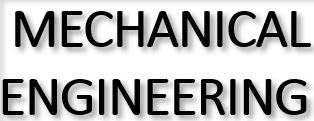Hi guys in this article we discuss the topic Difference between Spot Welding and Seam Welding it is important topic in welding process so without wasting of time let's start further information,
 |
| Difference between Spot Welding and Seam Welding |
Spot welding and seam welding are two common methods used in the welding industry, and they differ in terms of their applications and techniques. Breakdown of the key differences between spot welding and seam welding:
Spot Welding:
Application: Spot welding is primarily used for
joining two or more metal sheets together at specific points or spots. It is
commonly used in industries such as automotive manufacturing, sheet metal fabrication,
and appliance production.
Technique: In spot welding, two copper electrodes are
placed on either side of the metal sheets to be joined. A high electric current
is passed through the electrodes, generating heat at the contact points. The
heat melts the metal surfaces, and as the current is maintained, the molten
metal solidifies, forming a weld nugget or spot.
Welding Points: Spot welding creates localized welds
or discrete weld spots at specific locations along the metal sheets. These weld
spots are typically small and circular in shape, ranging from a few millimeters
to a centimeter in diameter.
Speed: Spot welding is a relatively fast process, as
each spot weld can be completed in a matter of milliseconds.
Strength: Spot welds are generally strong and provide
good resistance to tensile and shear forces.
Seam Welding:
Application: Seam welding is used to create continuous
and leak-proof welds along the length of overlapping metal sheets.
Technique: In seam welding, two rotating copper wheels
or wheels with electrodes are used to apply pressure along the joint between
the metal sheets. Simultaneously, an electric current is passed through the
wheels, generating heat. As the wheels move along the joint, the heat melts the
metal, and upon cooling, a continuous weld is formed.
Welding Line: Seam welding creates a continuous weld
along the length of the joint between the metal sheets. The resulting weld line
is generally straight and can vary in width depending on the design and
settings of the welding equipment.
Speed: Seam welding is typically slower compared to
spot welding since it involves the continuous movement of the welding equipment
along the joint.
Strength: Seam welds provide high integrity and are
often strong and resistant to leakage. The strength of the seam weld is
influenced by factors such as the welding parameters, material thickness, and
joint design.
In summary, spot welding is used for discrete welds at
specific points, while seam welding creates continuous welds along the length
of overlapping metal sheets. Spot welding is faster but creates localized
welds, while seam welding is slower but produces continuous and leak-proof
welds. The choice between the two methods depends on the specific application
and requirements of the welding project.


.jpg)



